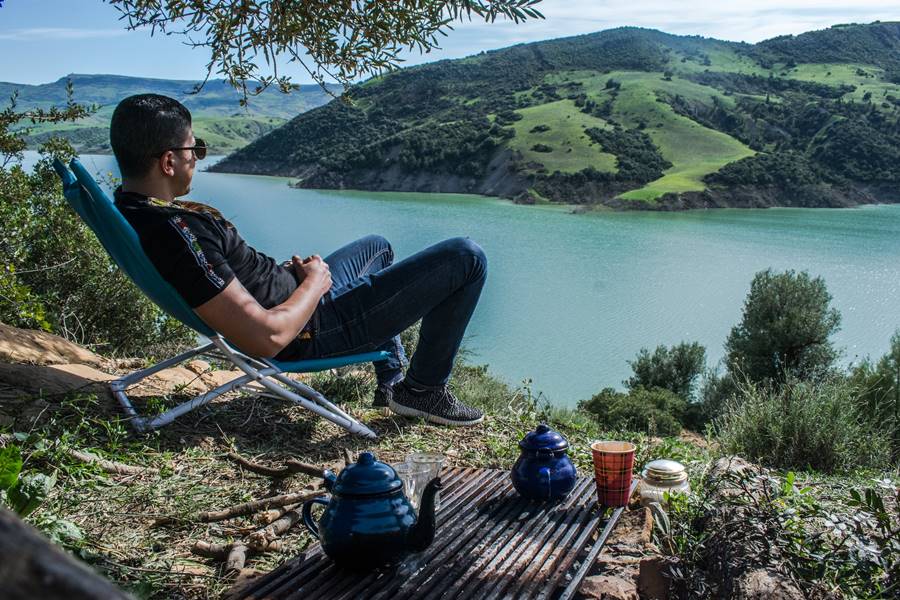Lifestyle photography is a style of photography that captures everyday moments and activities in a natural and candid way. It aims to tell a story about a person’s or a family’s life by documenting their real-life experiences, interactions, and emotions. Instead of staged poses and formal settings, lifestyle photography focuses on capturing genuine expressions and genuine moments.
For example, instead of posing in a studio, lifestyle photography might involve taking pictures of a family playing in a park, cooking together in their kitchen, or simply spending quality time at home. The goal is to create images that reflect the personalities, relationships, and unique characteristics of the people being photographed.

Lifestyle photography is often used for family portraits, engagement or wedding shoots, newborn or maternity sessions, or even to capture the essence of a brand or product. It aims to create a more relaxed and authentic representation of people’s lives, allowing them to be themselves in front of the camera and capturing the beauty of everyday moments.
The Aims of Lifestyle Photography
The aims of lifestyle photography can be summarized in simple terms:
Authenticity: Lifestyle photography aims to capture genuine moments and emotions. It seeks to portray people as they truly are, rather than in posed or staged situations. The goal is to create photographs that feel real and reflect the true essence of the subjects.
Storytelling: Lifestyle photography aims to tell a story about a person’s or a family’s life. By documenting their everyday experiences and interactions, it captures the unique aspects of their personalities and relationships. The photographs become a narrative that reflects who they are and what their life is like.
Connection: Lifestyle photography strives to create a relationship between the viewer and the subjects. Capturing relatable moments and emotions, it allows viewers to feel a sense of familiarity and empathy. The aim is to evoke an emotional response and create a meaningful connection through the photographs.

Context and Environment: Lifestyle photography pays attention to the surroundings and locations where people live and interact. Including elements of their environment, such as their home, favorite places, or meaningful settings, adds depth and context to the photographs. This helps to paint a more complete picture of their lifestyle.
Natural Beauty: Lifestyle photography often embraces natural light and settings. It aims to capture the beauty of everyday life and the moments that might otherwise be overlooked. By focusing on the simplicity and authenticity of ordinary moments, it celebrates the beauty found in the mundane.
Overall, lifestyle photography aims to capture the real, meaningful, and beautiful aspects of people’s lives. It seeks to create photographs that resonate with viewers and tell a story that goes beyond mere visuals, conveying emotions, connections, and the uniqueness of each individual or family.

Method of Lifestyle Photography
The method of lifestyle photography involves capturing natural and authentic moments by following a few key principles:
Observation: The photographer observes and pays attention to the subjects in their environment. They look for interesting activities, interactions, and emotions that occur spontaneously.
Storytelling: Lifestyle photography focuses on telling a story. The photographer aims to capture the essence of a person’s or a family’s life by documenting their everyday experiences and emotions. They look for moments that reflect their personalities and relationships.

Candidness: Instead of posing subjects, lifestyle photography encourages them to be themselves and act naturally. The photographer aims to capture genuine expressions and emotions by letting the moments unfold naturally.
Location and Setting: Lifestyle photography often takes place in familiar environments, such as homes, parks, or other meaningful locations. These settings add context and depth to the photographs, enhancing the storytelling aspect.
Natural Light: Natural light is often preferred in lifestyle photography as it creates a warm and authentic atmosphere. Photographers may use available light sources or position subjects near windows or in outdoor settings to make the most of natural light.
Minimal Interference: Lifestyle photographers strive to have minimal interference with the scene. They try to blend into the background and let the subjects go about their activities without disrupting the natural flow.

Patience: Patience is key in lifestyle photography. The photographer may need to wait for the right moment to capture an authentic expression or a meaningful interaction. Being patient allows for more genuine and compelling images.
Overall, lifestyle photography aims to capture the beauty and uniqueness of everyday life by focusing on real moments, genuine emotions, and the natural environments in which people live and interact.
Pros and Cons of Lifestyle Photography
Here are the pros and cons of lifestyle photography explained in simple terms:
Pros of Lifestyle Photography
- Lifestyle photography captures genuine moments and emotions, creating photos that feel real and reflect the true essence of the subjects.
- Lifestyle photos have the power to evoke emotions and create a connection between the viewer and the subjects. They can elicit empathy and a sense of relatability.
- Lifestyle photography tells a story about a person or a family’s life, showcasing their unique experiences, relationships, and personalities. It adds depth and meaning to the photographs.
- Lifestyle photography celebrates the beauty found in everyday life and ordinary moments. It captures the simplicity and authenticity of real-life situations, highlighting the charm in the mundane.

Cons of Lifestyle Photography
- Since lifestyle photography focuses on capturing candid moments, there is limited control over the subjects and the environment. The photographer must be adaptable and work with whatever unfolds naturally.
- Authentic moments can be unpredictable, and capturing them requires patience and timing. It may take time to capture the perfect shot or wait for the right circumstances to arise.
- Lifestyle photography often relies on natural light, which can vary and present challenges. Photographers must be skilled in working with different lighting conditions to achieve desired results.
- Lifestyle photography embraces imperfections and the beauty of the unpolished. This means that traditional notions of perfection, such as flawless poses or meticulously staged scenes, may not be the focus of these photos.
Overall, lifestyle photography offers the benefits of authenticity, emotional connection, and storytelling. However, it can also present challenges in control, unpredictability, and technical aspects, and may deviate from conventional standards of perfection.


